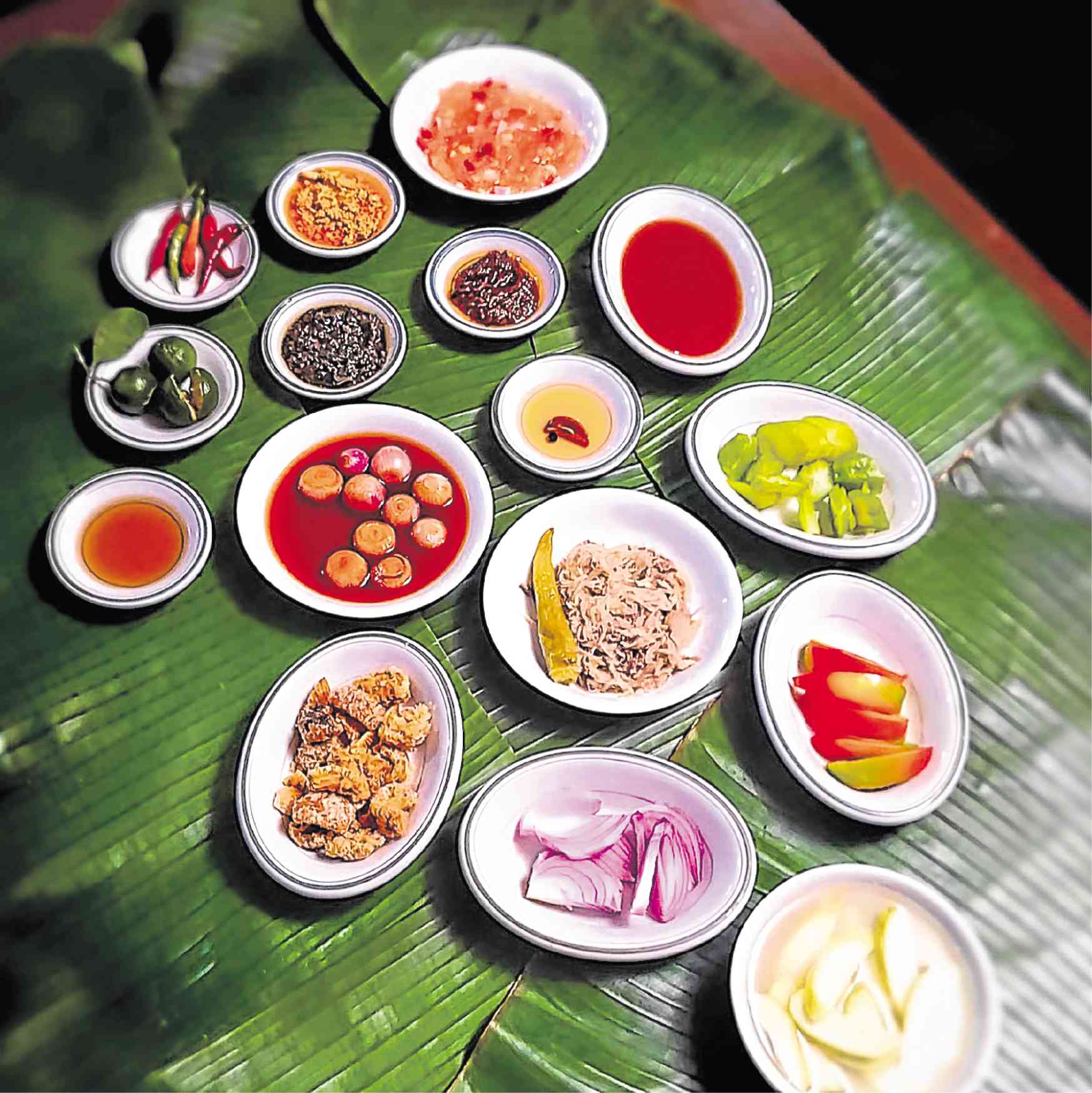
Over lunch, I learned a lot from Ige Ramos, food writer and president of Culinary Historians of the Philippines.
Of the many topics we discussed, it was his passion for tinapang galunggong that I found most interesting.
“The male tinapang galunggong is more delicious,” he declared. “In texture it is firmer, while in flavor, it is more intense and robust.”
When picking tinapang galunggong, he said, one must keep in mind that the rounder ones are male and the flat, female.
Growing up, he recalled he never felt anything was amiss about having tinapa for lunch.
Ige said he holds dear the memory of how his mother prepared tinapa—with everything on it! The fish would come with a range of dipping sauces, relishes and pickled vegetables that included sili, huevos de pescao (bihod), papaya and carrot atchara, calamansi, bagoong tostado, bagoong with angkak (red rice yeast, a natural coloring agent), patis isda, patis alamang, burong sibuyas tagalog, sukang irok (caong), chicharon, kilawin papaya, kamias, sibuyas, kamatis, burong mangga, talbos ng kangkong, and burong itlog ng pugo.
Hearing all that, I understood why tinapa conjured for Ige visions of abundance.
Our conversation turned to the Chabacano-Caviteño cuisine concept of “terno-terno,” in which food is paired in terms of taste, texture and flavor; and “tono-tono,” in which the taste and texture complement each other.
Thus, a meal’s goodness depends on how the food is matched to create an experience. It involves varied tastes, textures and pleasant bursts of flavors. It is the coupling of tinapang galunggong with the platitos de condimentos that transforms the ordinary into the extraordinary.
Ige revealed his favorite condiments that enhance the already tasty, tinapang galunggong. The recipes are from his book, “Republic of Taste.”
Atcharang Sayote
2 sayote
10 siling lubuyo
A pinch of tawas (alum), optional
Peel, wash and cut the sayote into batonnets (sticks). Soak in salted water for 15 minutes.
Rinse well, pat dry and dry under the sun for two hours.
Cut and deseed siling labuyo laterally in four parts.
Place sayote and labuyo in jars, and pour pickling syrup.
Cure 2 to 3 days before serving.
Optional: A pinch or two of powdered tawas can be added as a curing preservative agent.
Burong Sibuyas
¼ k sibuyas Tagalog
2 c vinegar
½ (or more) c sugar
1 tbsp salt
6 garlic cloves, peeled, pounded and chopped
1 thumb-sized ginger, peeled and pounded
½ c (or more) cooking wine (optional)
Spice sachet containing cinnamon, star anise, bay leaf (laurel) and whole peppercorn
In a saucepan, combine vinegar, sugar and salt. Once it starts boiling, put the cooking wine, garlic, ginger and the spice sachet. Turn heat down to low and let simmer for 25 minutes.
Strain well. Discard the garlic, ginger, and spice sachet.
Add peeled onions and leave to pickle 2-3 days before consuming.
Salted Egg Salsa
1 salted egg, chopped
3 small tomatoes, chopped
1 small red onion, chopped
2 cloves garlic chopped
Coriander, to taste, chopped
Mix all ingredients. Serve.
Ige’s preferred tinapang galunggong is from Carms Food, 257 Don Basilio Leyba St., Ligtong 4 Rosario, Cavite (tel. 046 4380944) and from his suki, Josie, in the fish section of the Cavite City Public Market.
I urge every patriotic foodie to get a copy of the book “Republic of Taste.” Each recipe is a testament to our uniqueness as a people. E-mail ige.ramos@gmail.com.

